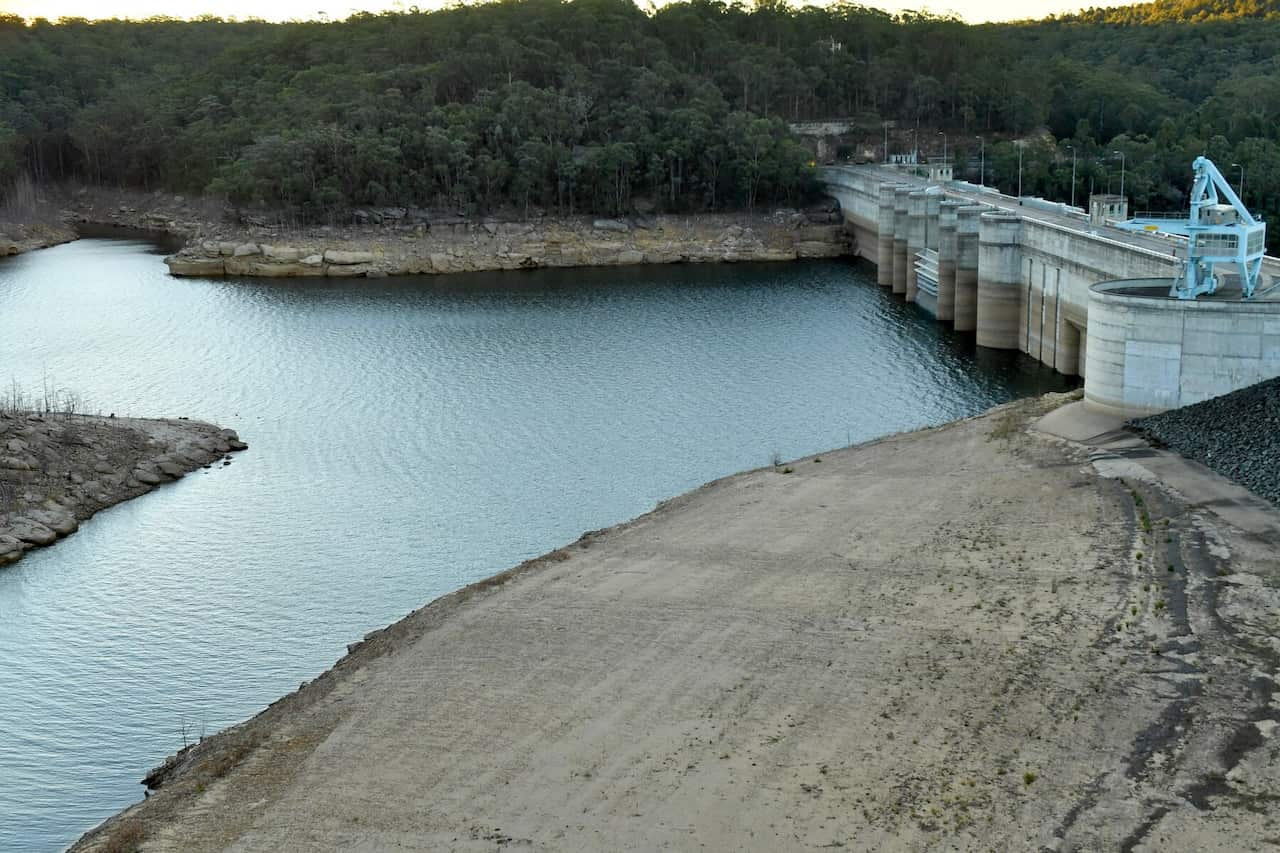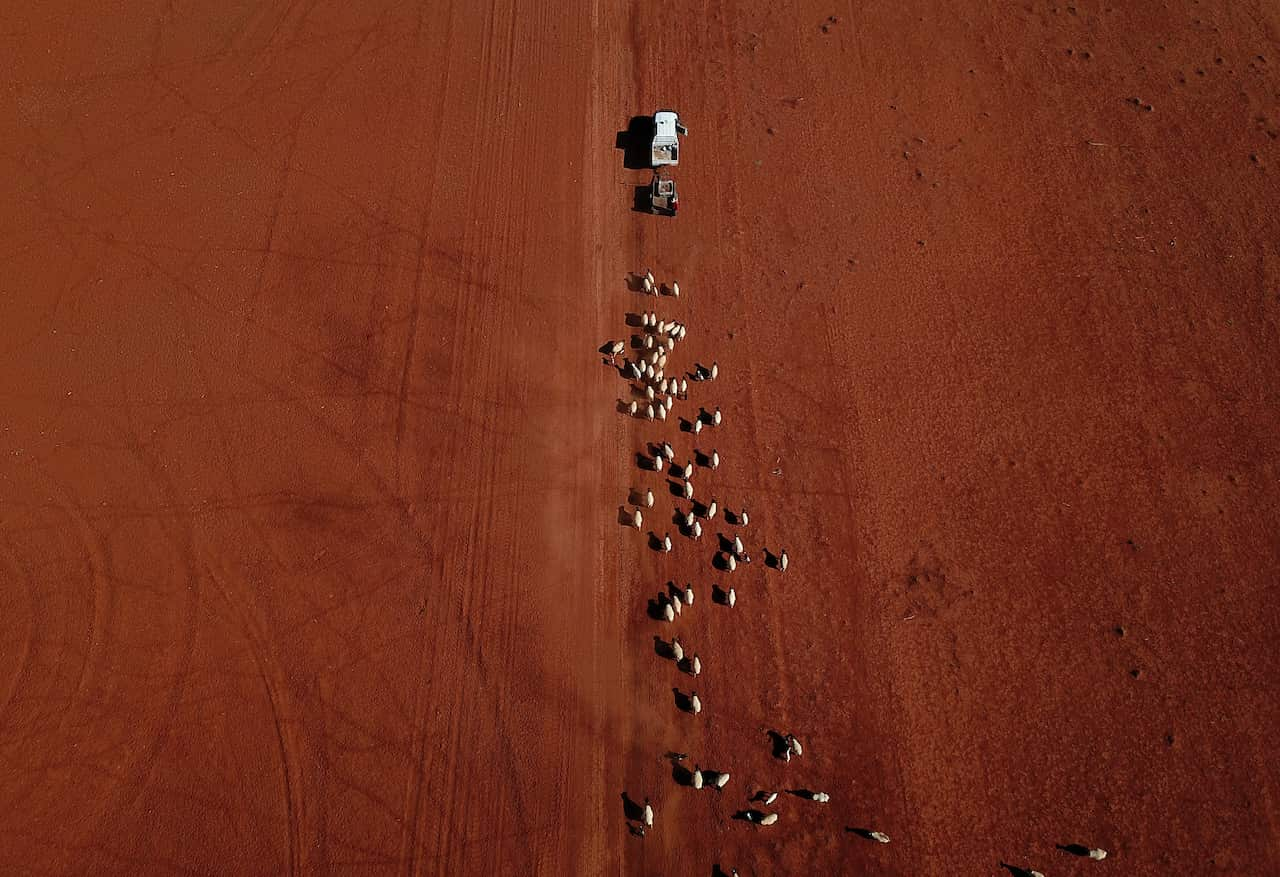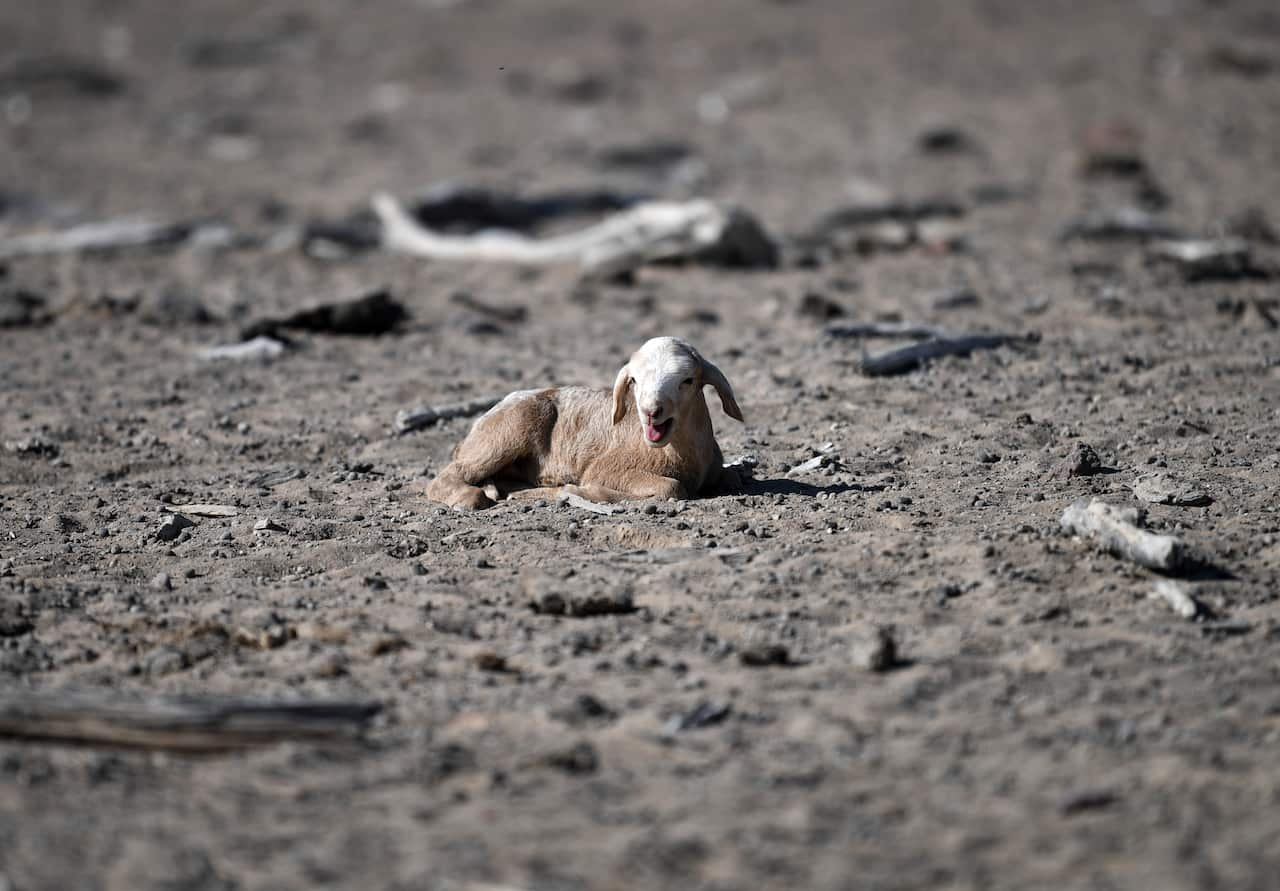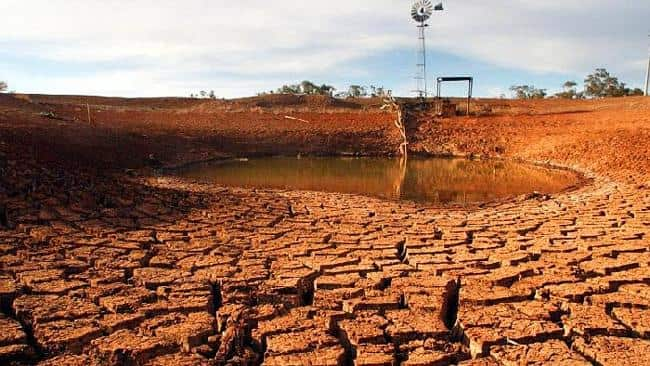Drought-stricken communities in Australia at risk of facing a ‘day zero’ when water supplies dry up are holding out hope the dire threat won't come to a head.
But the big dry persists in NSW, Queensland, and parts of Western Australia and the Northern Territory - threatening water supplies. Mayor of the Bogan Shire Council Ray Donald said his district has been told their water security could be at risk in a "little longer" than six months.
Mayor of the Bogan Shire Council Ray Donald said his district has been told their water security could be at risk in a "little longer" than six months.

Drought continues to impact New South. Source: AAP
But despite the drought’s unprecedented “severity and duration” he’s urging against alarmism of the threat facing his central NSW township.
“There is concern out in the street and in homes about the duration and severity of this drought,” Mr Donald told SBS News.
“But as far as domestic water is concerned our residents know that it is safe and secure at the moment.” The federal government is rolling out funding for farmers, small businesses, families and schools in drought-affected communities as part of a $57 million support package.
The federal government is rolling out funding for farmers, small businesses, families and schools in drought-affected communities as part of a $57 million support package.

An aerial image of sheep as they follow a ute delivering cotton seed on a drought affected property near Bollon in southwest Queensland. Source: AAP
Fifty-two more councils are set to receive $1 million under the Drought Communities Program, with a new focus on regions struggling in Western Australia.
This adds to 128 council’s eligible under the program announced in November last year, including Mr Donald's Bogan Shire Council area.
But it’s still up to communities to preserve their region's precious water supplies.
ABC reports that an analysis of data provided by state and local governments has found drought conditions have left 55 towns at risk of running out of water in a worst-case scenario.
In the Bogan Shire Council, level three or “high” water restrictions have been enforced with locals cutting their usage from 220 litres to around 135 per person, per day.
Here the biggest township of Nyngan has an estimated six months water remaining, and smaller villages of Girilambone and Coolabah could have less than three without rain falling.
“I wouldn’t call it a 'day zero' – I wouldn’t dramatise it that much … we're keeping residents well informed and there is not alarm,” he said.
“It is a problem that is ahead of us. [But] there are solutions that still can occur.” The confronting future, facing towns with at-risk water supplies is an evolving challenge as intermittent rainfall helps replenish reserves.
The confronting future, facing towns with at-risk water supplies is an evolving challenge as intermittent rainfall helps replenish reserves.

A newborn lamb is seen on a drought affected property near Bollon in southwest Queensland. Source: AAP
UNSW Professor Greg Leslie is Director of the university’s Global Water Institute and has more than two decades experience in the water industry.
He said the 'day zero' threat facing regional towns is a “very serious situation” but can often be warded off by taking steps to improve water conservation.
“It is a serious issue so you need an attention-grabbing headline like 'day zero' – so we have something getting people talking about it,” he said.
"[But this] in a lot of cases keeps getting pushed out because communities do much better jobs at conserving water than they think."
For some towns accessing bore water storages through underground aquifers and pumping it to the surface is the answer.
While coastal areas can use desalination plants, many regional communities are reliant on storm-water recycling, dams and localised desalination units to improve water security.
“Even though communities can do wonderful things and push the date out a little bit ... what's really the problem is the underlying change in water availability," Mr Leslie said.
Ensuring water quality from alternative sources is another concern.
“Structurally we have got to change the way water is used. They need to take a longer-term view to really begin to re-plan to make the water supplies more resilient.”
The Prime Minister held the first meeting of the drought and flood advisory board in the regional NSW town of Orange on Tuesday.
The town is estimated to have 12 months or less of water if it does not rain and water infrastructure plans and upgrades fail.
Prime Minister Scott Morrison said it was important people and businesses suffering continued to get the support they need.
“I want all Australians impacted by drought to know that you have remained firmly in our Government’s focus,” the Prime Minister said.
“You remain at the centre of relief, response and recovery plans for the future and making Australia more resilient to these challenges in the future.”
In emergencies, water can be trucked to in-need communities – but this isn’t economically sustainable for bigger populations.
Rural Aid has been shipping domestic water supplies to farmers, making more than 1,300 deliveries to those battling the drought. Rural Aid CEO Sarah Hunter told SBS News that many of the farms are not on town water supplies.
Rural Aid CEO Sarah Hunter told SBS News that many of the farms are not on town water supplies.

Drought in Australia has some towns at risk of running dry. Source: econews
“The drought is going to continue – the need is going to continue, this is a marathon in terms of recovery of farms and communities,” she said.
“[But] the bigger picture is beyond [our] capacity to solve.”
Water supplies in large regional centres such as Tamworth, Armidale and Dubbo are among those identified as being at risk.
Armidale Regional Council Mayor Simon Murray told SBS News their water supplies are estimated to have another 12 months before security is threatened.
The council area has also seen residents cut back to 135 litres per person, per day, despite restrictions allowing them 30 litres more than that.
“Our community has come right on board,” Mr Murray said.
He said it's about getting on the “front foot” of reducing water consumption.
“The longer you leave it until day zero – the greater chance you have of having an inflow,” he said.
“A litre saved today is a litre for tomorrow.”
Share




